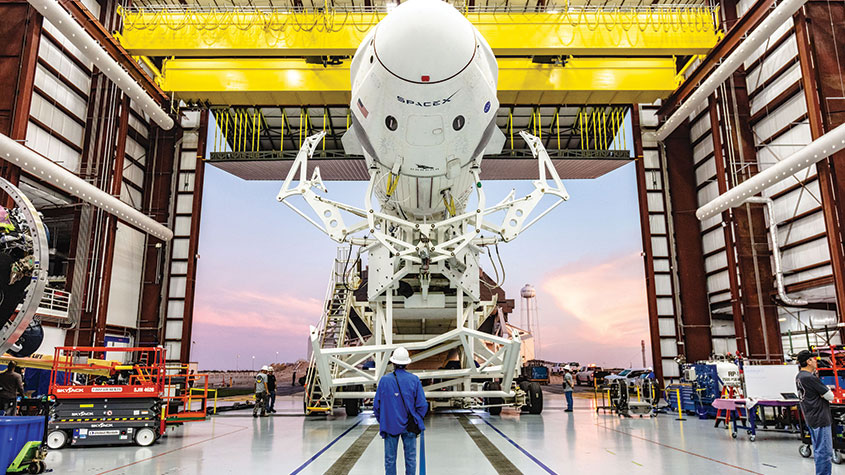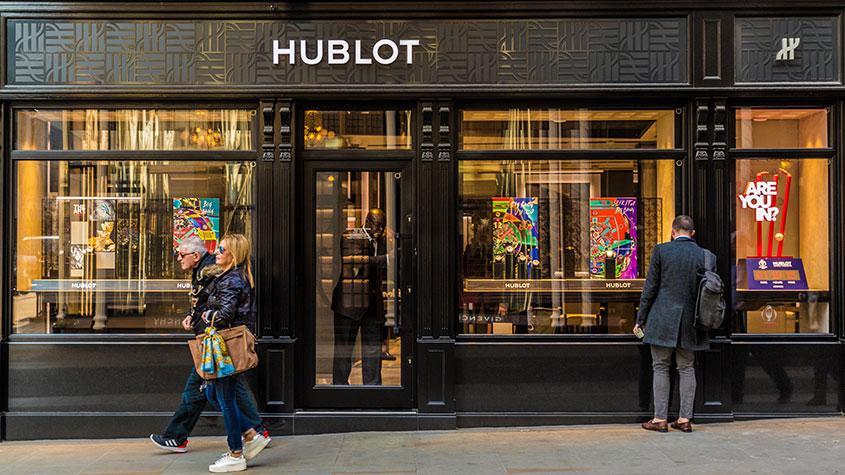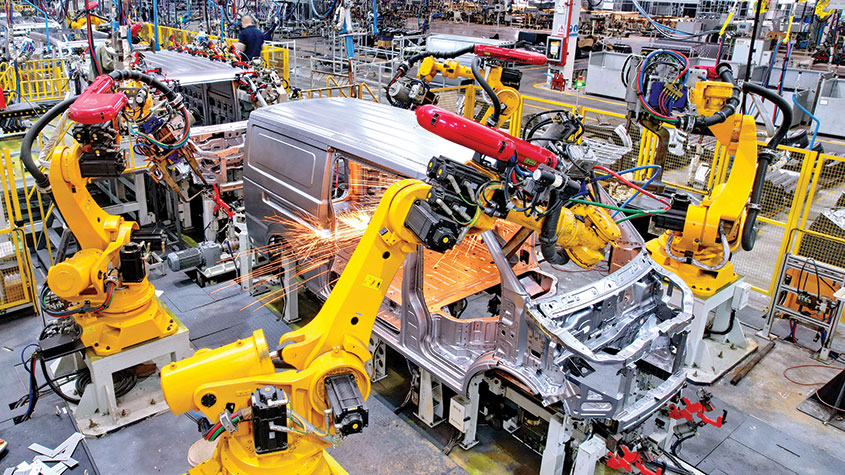What to expect in 2016
Will stagnation in the West continue? Is China heading for trouble? Will oil prices stay at rock-bottom? Has bitcoin finally come of age? We asked our best writers for their views on what might happen in the year ahead.

Will stagnation in the West continue? Is China heading for trouble? Will oil prices stay at rock-bottom? Has bitcoin finally come of age? We asked our best writers for their views on what might happen in the year ahead.

Be prepared a perfect storm is brewingDr Peter Frankopan
Historians are often accused of relying on the benefit of hindsight there is nothing easier than being wise after the event. But at the risk of blowing my own trumpet, I can reflect on a pretty good 2015 as far as forecasting goes. In November, I warned in these pages of fragility in Saudi Arabia and the tensions with the Shi'a population that risked a major confrontation with Iran; and in the summer, I warned about China's slowdown, an asset bubble and a looming liquidity crisis.
Subscribe to MoneyWeek
Subscribe to MoneyWeek today and get your first six magazine issues absolutely FREE

Sign up to Money Morning
Don't miss the latest investment and personal finances news, market analysis, plus money-saving tips with our free twice-daily newsletter
Don't miss the latest investment and personal finances news, market analysis, plus money-saving tips with our free twice-daily newsletter
History does not repeat itself; but its lessons help to explain why things are happening, and can allow for a clear understanding of what lies ahead. I look at the history of the region that runs from the Mediterranean to the Pacific coast of China, and a clear picture is emerging. It is easy to compartmentalise issues: the conflict in Syria and Iraq, for example, seems to have nothing to do with the problems in Russia, or between Russia and Ukraine. The tensions between Saudi Arabia (and other Sunni states) and Iran appear to have no links to the rise of the Taliban in Afghanistan, or with weaker growth in China.
Yet they are all interlinked. We are witnessing a fundamental redistribution of global political, military and even economic power away from the West towards the East the birthing pains of a new world. The scale of change is remarkably easy to miss: few recognise that the US and Europe's share of global GDP has fallen from 60% to under 40% in three decades; few too appreciate that for all its stockmarket volatility, China's economy has quadrupled in size since 2005 a decade of contraction and stagnation for most Western economies.
In 2016, things will get worse, not better. For investors in the UK, conditions since 2008 have been as benign as they could possibly have been perfect calm, after what some saw as a perfect storm (and others recognised as painfully predictable). We have had record-low interest rates, falling energy prices, and money pumped through the system to bail out banks that had no business doing the business they did.
But now the time is coming to pay the piper. It is not just investors in China who have been displaying "irrational exuberance" as investors in mining and energy painfully learned last year, everyone was betting on the Chinese miracle not just having a happy ending, but being never-ending. China's slowdown will drag markets down for months to come. Worse still, the risks of major dislocation as a result of military conflict and state implosion are now higher than at any time since the early 1970s perhaps even since the end of World War II. A swathe of resource-rich, strategically significant and politically fragile countries to the east of Europe now face unprecedented pressure from within and from without.
As history shows, these threats can present opportunities for those with clear minds and strong constitutions. For most, however, the short term spells difficulties and dangers. No one likes to lose money, especially when pessimism is caused by events so far away. But that is one of the prices of globalisation: when one region loses, so do others. A historian could tell you that, of course, because globalisation is nothing new. We've seen these patterns before and they usually tell you that a storm is coming.
Dr Peter Frankopan's The Silk Roads: A New History of the World, is published by Bloomsbury, £30.

Sell the euro, bonds, and gold; buy the dollar, oil, and UK sharesJames Ferguson
As I noted at MoneyWeek's end-of-year roundtable, quantitative easing (QE money printing) dilutes currencies and is inherently inflationary. This is the case, even if the reason for doing QE a deflationary backdrop, caused by banks reining in their lending means that no actual net inflation results. You need only look at the events of the past few years for proof of this. During the six years that the US was doing QE, for example, the dollar was weak against the euro. Despite the eurozone sovereign crisis and all those Grexit fears, the euro remained strong because it wasn't being diluted by QE. However, now that the US has ceased QE (because US banks are lending again), and the European Central Bank (ECB) has begun QE, I expectthe euro to be chronically weak against the dollar for the next two to three years.
ECB boss Mario Draghi has said that QE will last until at least early 2017. But based on the size of the Anglo-Saxon version (roughly 25% of nominal GDP in both the US and the UK), and the slow rate of loan loss recognition by banks on the continent to date (which means the banks still have plenty of tidying up todo before the ECB can stop printing money to compensate for them not lending), I reckon that eurozone QE will probably have to go on until 2020 keeping the euro weak. So there is no reason, to my mind, that the euro's lows of 2000-2002 (around €0.90 to the dollar, from today's €1.10 or so) can't be reached again.
Turning to oil, the price of a barrel of Brent has trended up over the decades, but it's happened within a very wide trading range. It is not that rare for the price to travel one standard deviation (SD) above or below its long-run trend this marked the lows at several times throughout the 1980s and 1990s. But it is very rare indeed (we're talking two to three times in 50 years) for it to go all the way out to two SDs. That might all sound a bit technical, but the important bit is that two SDs below trend would be around $23 a barrel from here, whereas one SD would be about $37 a barrel which is where oil is right now. On top of that, there is also a lot of historical support for the price at around this level. So although it's a massively contrarian view, I think oil is now a buy.
Bonds: a huge build-up of risk
Bonds have performed every bit as well as stocks over the last generation it's been a tremendous bull market. But the 35 years prior to that saw bonds lose 1%-2% every year in real (after inflation) terms for a whole generation. And with interest rates now at record lows (5,000-year lows, according to the Bank of England's Andy Haldane) and global debt sitting at around $230trn, a huge amount of risk has built up in bonds. Also, note that although the gold bull market is clearly well and truly over, the long-run returns from the yellow metal (which, in real terms, are zero) imply it may still only be halfway through its bear market.
Equities: buy the UK, sell America
Over the last 215 years, stocks have outperformed other assets (returns on property are roughly similar, although the data only goes back 40 years in this case). Importantly, and despite relatively short-term volatility, stock returns are also more stable than those on either bonds or gold. So I'm naturally inclined to favour stocks over most other assets.
Today, the FTSE All Share index is very close to trend fair value (given the range either side of GDP over the last 50 years) and yields almost 4% (the 30-year gilt yields just 2.5%, and isn't inflation-proof). Note, for example, that the FTSE All Share dividend yield is now higher (for the first time in at least four decades) than a 20-year inflation-protected annuity. This means that although regulators have coerced UK institutional pension funds into reducing their exposure to domestic equities from 55% in 1987 to 4% today, a rational pension fund today might eschew almost all bonds and be very, very overweight stocks and property.
The same cannot be said for the US stockmarket, however, which is about 50% over-valued based on its cyclically adjusted price/earnings (Cape) ratio, which suggests it could lose as much as a third. The same sort of downside potential is also suggested by the S&P 500's long-run relationship with nominal GDP in America. So a potentially sizeable bear market in the American stockmarket cannot be ruled out. It may even be upon us US stocks appear to have broken their most recent four-year uptrend and started a new downward trend.
House prices: sell London, buy the UK
Finally, everyone's favourite topic, house prices. Seemingly unnoticed by the press, UK house prices on a nationwide basis suffered a five-and-a-half-year slide after summer 2007, and only made a new high just over a year ago. The average house today is proportionally the same price compared to British GDP as it was in 1953. The recent strength which we read a disproportionate amount about has been driven almost entirely by London and the commutable parts of the southeast, where prices look dangerously overextended. Elsewhere, houses are now "cheap" again.
James Ferguson is the co-founder of the MacroStrategy Partnership, MacroStrategy.co.uk.

Buy Japan it's awash with cheap stocksTim Price
"Fair is foul, and foul is fair." Macbeth's witches would be right at home in the financial markets of 2016. Assets deemed by the regulator as "safe" (ie, Western government bonds) are so expensive as to be anything but. "Risky" assets (eg, commodities and emerging markets), on the other hand, are starting to look quite attractive, albeit they could get cheaper still. Will investors venture beyond their traditional comfort zones this year and start nibbling at opportunity?
Three decades of progressively lower interest rates have come to a carefully choreographed stop, courtesy of Federal Reserve chief's Janet Yellen's quarter-point rate hike in America. This was the most widely telegraphed tightening of Fed policy in history, and stock, bond and currency markets took it in their stride. But markets face tougher headwinds in 2016: the divergence between (tighter) monetary policy in America and (looser) policy in the eurozone suggests volatility across asset classes, most notably currencies there are no signs of any end to hostilities in the global currency wars. China may be on the verge of a fresh round of renminbi devaluations, and if the US dollar continues to strengthen, which seems plausible, pressure on emerging markets is unlikely to abate.
Yet with Western equity markets at generally giddy valuations, investors have to be very picky. While the FTSE 100 trades on a prospective price-to-earnings (p/e) ratio of roughly 15, which makes it look reasonably priced, if not outright cheap, it is home to lots of oil and mining companies that have fallen off the ugly tree and hit every branch on the way down. It is also home to a number of banks whose balance sheets are still almost impossible to decipher. Fears of "Brexit", meanwhile, may keep animal spirits in the UK market relatively subdued, although Mark Carney at the Bank of England is unlikely to follow Yellen's rate-hiking lead anytime soon, which may help sentiment.
BlackRock's Investment Institute expects "little or no price appreciation in fixed income and only muted gains for most equity markets" this year, a view shared by GMO's fund managers, who expect flat returns for global stockmarkets and negative real returns for developed world bonds not just for the year ahead, but over the next seven years. Aggressive monetary stimulus has a dark side it means that future returns have been hauled back into the present.
Wild cards for 2016 include China and oil. A slowdown in the Middle Kingdom spooked most equity investors last year, and further weakness in the oil price may do the same in the months ahead. Price deflation in the commodities sector comes at a cost, as the 85,000 employees let go by (shrinking) mining giant Anglo American will confirm. Any recovery in the eurozone is likely to be soggy, but a weaker euro will help. What won't help is the state of Europe's banking sector, which remains stubbornly unreconstructed by the standards of the US, or even the UK. If this all seems pretty gloomy, it should. Bond markets are stretched across the board, and we've already seen ominous echoes of the sort of credit-fund shenanigans that ushered in the financial crisis back in 2007/2008.
There are some bright spots too. From a bottom-up perspective, Asianstockmarkets still stack up favourably versus those of the West they have brighter growth prospects, superior demographics, and healthier banks. If China manages a soft landing (see Rupert Foster's forecast below), investors shouldn't need to be asked twice.
However, as was the case last year, my favourite market remains Japan. It is awash with cheap stocks there are more companies with p/es of less than ten in Japan, than across China, the US and the UK combined. Abenomics the political and economic changes under Prime Minister Shinzo Abe has ushered in a genuine revolution in corporate behaviour and a belated focus on shareholder returns. One of my preferred Japan plays is Neptune Japan Opportunities (www.neptunefunds.eu), which hedges its yen exposure. It had an indifferent 2015, but has a good longer-term track record.
And without trying to sound like a broken record, I suspect that inflation plays, including gold, will rebound this year. The gold bear has been painful, but from a fundamental perspective (as opposed purely to a price-based one), the reasons for owning gold are the same as they were at the height of the global financial crisis. Overall debt levels and the risk of systemic distress are higher now than in 2008. In short, lots of questions, but few reassuring answers. Investors' expectations should be suitably calibrated.
Tim Price is director of investment at PFP Wealth Management, PFPG.co.uk.

The year of the lithium batteryBengt Saelensminde
Battery technology will be a huge story in 2016, due mainly to two key factors. The first is cost the industry is on the cusp of being able to produce lithium-ion (li-ion) cells (the type of battery that powers your laptop or smartphone) at a similar price to those horrible lead acid batteries. But just as important is the rapidly improving technology. The number of charge cycles (the battery's lifetime, in effect) is rising, even as the amount of time taken to charge one up falls. The weight and size of the technology is falling too.
As a result, more and more businesses are making the shift. As renewable energy grows more important, batteries for grid storage are already sucking huge volumes of lithium off the market. On top of that, the latest versions of many everyday home appliances no longer run on traditional batteries, but on more convenient built-in rechargeable li-ion ones. Speakers, torches, radios you name it, there's a li-ion equivalent. More important still is that we're seeing products that haven't traditionally been battery-powered such as mowers, vacuum cleaners and cars start to use li-ion power. Indeed, last year, in my home country of Norway, we saw the introduction of the first li-ion ferry, which uses hydroelectric power to charge its cells by night. Norwegian-built hybrid seagoing vessels are set to appear in 2016.
This stage of the li-ion adoption cycle will mean a surge in demand for their key ingredients: lithium, graphite and cobalt. And it's not just the breadth of applications, but the amount of raw ingredient demanded per unit too. The average mobile phone uses about 3g of lithium in its production; for a laptop, it's maybe 30g. But as we move towards vehicles, we're talking tens of kilos. That's a lot of future demand for the metal. In December, for example, the Chinese consortium that bought Saab said that it plans to go all-in on li-ion car production.
Indeed, 250,000 vehicles are being built to satisfy a single order from a local car-leasing company. To put that into perspective, there are currently less than 700,000 electric cars on the road in total. Meanwhile, electric car pioneer Tesla is set to ramp up production from tens of thousands to hundreds of thousands of units over the coming two years. And following the "diesel-gate" VW scandal, every major manufacturer has announced plans to produce electric cars (or hydrogen ones, in the case of Toyota) and most have a plan eventually to phase out fossil-fuel-powered vehicles altogether.
I had a very exciting 2015 following some of the smaller lithium explorers including Bacanora Minerals (Aim: BCN) as they signed supply deals with key industry players. But 2016 looks set to be even more promising, as the juniors move from exploration and start building their mines. This is the year when institutional investors start to get excited about one of the rare rays of sunshine in mining right now. I for one can't wait!
Bengt Saelensminde is an entrepreneur and investor.

The best bets in Asia right now and for the long runRupert Foster
Short-termism is a problem for many investors, but those investing in developing economies have to be particularly wary of paying too much attention to short-term noise from stockmarkets and, in particular, stockmarket commentators. This is a long-term business. Occasionally there will be a country that cannot continue on its development path and whose prospects need to be reassessed, but generally speaking, buy and hold is the best way to benefit from all that wonderful economic growth and wealth creation.
On that note, China is both the largest economy and best investment opportunity in Asia. It is just entering the third stage of its development (roughly in line with Japan in the late 1970s to early 1980s). The stockmarket is still obsessed about metrics that were key in the second stage such as GDP growth, commodity usage and property development. But what matters now is domestic consumption. In 2015, consumption began to take a larger share of overall GDP. I expect this to continue in 2016, along with the Chinese bull market that despite plenty of volatility along the way started with 2014/2015's A-share boom. The government will persist in making a GDP growth forecast (one with a "6" in front of it) that bears little relation to the real world, but it will also fiscally stimulate enough to give it a semblance of truth. Commodity prices will remain weak, and the property market will become a less interesting investment for Chinese individuals, but private consumption will grow by more than 10%, with online retailing rising a staggering 40% year-on-year, in what is already the world's largest e-commerce market.
So all long-term investors should maintain large holdings in the top Chinese internet names (Alibaba, Baidu, Tencent and JD.com), whether individually, via an exchange-traded fund on the CSI China Internet index, or a good active manager. These names will benefit from rising passive interest after their inclusion in the MSCI China index, as well as growing interest from domestic investors, and the announcement of plans by companies such as Alibaba to dual-list their shares on the domestic A-share index, where low-quality internet businesses currently trade on p/es of above 100. The chance to buy may well come this quarter, as the leading American internet names (Amazon, Facebook, etc) correct from today's unsustainable valuations, leading a general correction in US equities.
Western commentary on China in 2016 will continue to focus on scare stories. The renminbi is likely to weaken by 5%-10% against the dollar (it has already moved by 5% since early November), but any movement will be taken as a sign of a pending collapse of confidence in China. But as long as the authorities can keep the currency below seven renminbi to the dollar (a 10% fall from early November), then any devaluation will simply present a wonderful buying opportunity for Chinese equities. If they let the currency weaken beyond this, there will be genuine concerns about the authorities' lack of control and the shock for Chinese and likely global equities will be severe.
Elsewhere in Asia, Japan is likely to become a more stock-specific market. Ideally, you'd focus on companies with aggressive pricing and market-share aspirations they're the ones that will reap the benefits of the weak yen. Sadly, these seem to be in the minority for now many managements would rather ape the West's QE strategy, jacking up share buybacks and dividend payouts (Japanese equities have an average payout ratio of just 28% compared to the FTSE's 65%). Japanese income funds are likely to be the main beneficiaries.
India has disappointed in 2015 after the optimism of 2014. Prime Minister Narendra Modi has not yet delivered a much-needed infrastructure boom. However, India has benefited from the commodity collapse, and with a positive credit cycle and the fastest GDP growth in Asia in 2016 at 7.5%, equities should have a good year. But Vietnam remains the most exciting long-term story in Asia as it leapfrogs India in the development queue it looks set to replicate the performance of China ten years ago.
Rupert Foster has been a pan-Asian equities fund manager for the last 20 years.

Keep an eye on politics and technologyDominic Frisby
Directionless markets are a headache for both investors and traders. Unfortunately, almost everywhere I look, I see a lack of clear trends. Most stockmarkets are flat. The same goes for the dollar and the euro, although sterling looks weak. Both the long bond (30-year US Treasuries) and short-dated bonds are basically flat, although yields have risen slightly over the last quarter. Even the price of London property is (mostly) flat. Only the bear market stalwart that is commodities shows any clear direction and that's down.
So the big question, and one I struggle to answer, is what next? Is this a large "topping" process in stockmarkets, or a pause before the next leg higher? Does last month's 0.25% US rate raise mark a genuine turn or just lip service? Has the US dollar perhaps the most important market of all put in a top, or will we see renewed strength next year? I'm hoping that by the spring, clearer trends will emerge. But my suspicion is that stockmarkets will roll over and the dollar will weaken. In my trading portfolio, I'm keeping quite a bit of dry powder in the form of cash. I do have some small short positions in a number of US stocks, most notably television streaming service Netflix. I also expect gold to be outperformed by the companies who mine for it, so I'm long some gold miners.
As for the longer run, bigger picture "invest in growth" is not a bad mantra, and one area that's definitely growing right now is bitcoin. Even though I've written a book on it, I've always been muted about its investment potential it was in the wrong place in the hype cycle. But we're through that, and now I'm bullish to me, bitcoin is a little like dotcoms in 2003. More generally, new technology and the economic disruption it causes (get ready for driverless cars, they're coming quicker than you think) is one of the major currents flowing beneath these directionless markets.
It's also going to be a risky year for politics. Voters are demonstrating increasingly intense dissatisfaction with politicians, just as two extremely important votes are coming up the EU referendum and the US elections. A Brexit whether or not you think it's a good thing could end both the EU and the UK (if it were to trigger a second Scottish independence vote). Meanwhile, in the US, Hillary Clinton, the establishment candidate, may not be the shoe-in most commentators think she is. In short, there's a great deal of potential upheaval ahead perhaps the next "Big Short" is, at long last, government debt.
Dominic Frisby writes for Money Morning, our free daily email.

The Great Unwind will continuePaul Hodges
What is the one thing investors need to know in 2016? In 2015, the answer was easy just avoid anything connected with commodities and emerging markets. The rationale for the collapse was that a "Great Unwinding" of stimulus by policymakers had started in the middle of 2014 and was gathering pace. China's decision to abandon stimulus meant that vast surpluses of oil, iron ore, copper, coal and many other commodities began to weigh on markets. In turn, this crashed the economies and currencies of commodity-exporting countries in a wide arc from Latin America through Asia and the Middle East to Russia.
My view is that this Great Unwinding idea will continue to be a reliable guide in 2016. Its core insight is that the key effect of stimulus has been to destroy the role of price discovery in important markets. Media and analyst commentary no longer focused on the fundamentals of supply and demand, but rather on whether we might seemore stimulus or its reverse. I suspect we will now see the impact of the unwinding of this stimulus spread from commodity and currency markets into stockmarkets and interest rates (with a knock-on impact on house prices).
If this happens, then 8.5 will be the one thing we need to know in 2016. What is 8.5, you may ask? It is the core valuation metric used by Benjamin Graham, the father of value investing, as described in his 1949 classic, The Intelligent Investor, which Warren Buffett has described as "by far the best book on investing ever written". In it, Graham identifies 8.5 as the appropriate p/e ratio for a company expected to maintain its current earnings for the next ten years. Any increase or decrease in projected annual earnings over this period changes the metric by a factor of two. So a company that can grow its earnings by 5% a year from now till 2025 would be fairly priced on a p/e of 18.5.
We don't have to take Buffett's word for Graham's genius: 1987 gave us a real-time experiment in valuation, with the Black Monday crash of 19 October. As the Harvard Business Review reported in May-June 1988, Graham's simple formula, when adjusted for interest rates, predicted the precise decline in the Wilshire 5000 index, and the closing prices for many top companies that day. No other valuation model even came close. Focusing on Graham's formula provides another benefit. It reminds us that true investment is long term ten years or more. It is not about short-term trading based on "will she, won't she" guesses about the Federal Reserve's next move on interest rates, or "risk on, risk off" strategies. Instead, 8.5 provides us with a simple, yet extremely powerful way of assessing whether a company is relatively over- or undervalued today. As a result, I think it will prove to be the one thing investors need to know as the Great Unwinding continues through 2016.
Paul Hodges publishes The pH Report.

Why I'm an unashamed bitcoin bullCharlie Morris
When it comes to what's interesting out there right now, I'm an unashamed bull on bitcoin. At the current price, you're paying about $6bn for the entire bitcoin network. That makes it the approximate equivalent of the world's 2,000th largest stock in other words, it's really not seen as a big deal. There are distressed mining stocks that have the same valuation as the entire bitcoin network. But what would you rather buy a potentially world-changing opportunity, or an expensive hole in the ground? I'm not suggesting for a moment that you should put 100% of your wealth in bitcoin to an extent it's still a solution looking for a problem. But I think that getting light exposure just now could pay off handsomely in the long run.
Turning more mainstream, the US dollar is clearly a major factor affecting markets, and I suspect that dollar strength will continue. The US economy is stronger than most of the rest of the world, and they're probably raising interest rates for the right reasons mainly that they're too low in the first place. They're at least able to consider "normalising" at a time when most others are unable to do so. That suggests that pressure on emerging markets will continue as former US Treasury Secretary John Connally once put it: "It's our dollar and your problem". Despite its strong run, the dollar, fundamentally, is not overvalued it's come from a position of being cheap in 2007 to something close to fair value now so it could go on for a while longer. I also think the yen is undervalued right now.
Finally, there's the question of Brexit. I believe that we should leave the EU. That said, there's no question that the pound will inevitably see some weakness over the referendum, as will certain areas of the stockmarket. From that point of view, those who want to prepare for any uncertainty on that front should look at the big globally exposed companies in the FTSE 100 excluding energy and mining, obviously which could turn into something of a safe haven.
Charlie Morris is the editor of the Atlas Pulse newsletter.
MoneyWeek's investment trust portfolio
| Caledonia Investments | CLDN | 2,385p | 2.4% | -16.2% |
| Personal Assets | PNL | 34,500p | 1.8% | -0.8% |
| Scottish Mortgage | SMT | 266p | 1.2% | -1.5% |
| Finsbury Growth | FGT | 576p | 2.4% | 0.0% |
| RIT Capital | RCP | 1,657p | 2.0% | 4.7% |
| Law Debenture Corp | LWDB | 491p | 3.7% | 6.8% |
Finally, if you haven't seen our model portfolio of six investment trusts, you might want to consider it for 2016. We've been running the model portfolio since summer 2012. Every six to nine months or so, we get our experts Alan Brierley of Canaccord Genuity, Sandy Cross from Rossie House, and Simon Elliott of Winterflood to review it and give us their views. The aim is to invest for the long run, and to make very few changes, so there have only been two "trades" in that whole time. It has done well since launch, and outperformed the market in 2015, although as everyone knows, past performance is no guide to the future. For more on the history of the portfolio, and how it's performed, visit MoneyWeek.com/portfolio.
Get the latest financial news, insights and expert analysis from our award-winning MoneyWeek team, to help you understand what really matters when it comes to your finances.
MoneyWeek is written by a team of experienced and award-winning journalists, plus expert columnists. As well as daily digital news and features, MoneyWeek also publishes a weekly magazine, covering investing and personal finance. From share tips, pensions, gold to practical investment tips - we provide a round-up to help you make money and keep it.
-
 ‘Inheritance tax insurance’ enquiries are soaring – but is it worth it?
‘Inheritance tax insurance’ enquiries are soaring – but is it worth it?Premiums for whole of life insurance can run to £5,000 a month to cover a £300,000 inheritance tax bill, with policies costing more the older you take them out.
-
 MPs warn over Lifetime ISAs which could leave savers out of pocket
MPs warn over Lifetime ISAs which could leave savers out of pocketThe Treasury Committee has highlighted confusion around the Lifetime ISA withdrawal charge, which risks consumers losing “a significant part of their savings”
-
 Invest in space: the final frontier for investors
Invest in space: the final frontier for investorsCover Story Matthew Partridge takes a look at how to invest in space, and explores the top stocks to buy to build exposure to this rapidly expanding sector.
-
 5 of the world’s best stocks
5 of the world’s best stocksCover Story Here are five of the world’s best stocks according to Rupert Hargreaves. He believes all of these businesses have unique advantages that will help them grow.
-
 The best British tech stocks from a thriving sector
The best British tech stocks from a thriving sectorCover Story Move over, Silicon Valley. Over the past two decades the UK has become one of the main global hubs for tech start-ups. Matthew Partridge explains why, and highlights the most promising investments.
-
 How to invest in videogames – a Great British success story
How to invest in videogames – a Great British success storyCover Story The pandemic gave the videogame sector a big boost, and that strong growth will endure. Bruce Packard provides an overview of the global outlook and assesses the four key UK-listed gaming firms.
-
 How to invest in smart factories as the “fourth industrial revolution” arrives
How to invest in smart factories as the “fourth industrial revolution” arrivesCover Story Exciting new technologies and trends are coming together to change the face of manufacturing. Matthew Partridge looks at the companies that will drive the fourth industrial revolution.
-
 Why now is a good time to buy diamond miners
Why now is a good time to buy diamond minersCover Story Demand for the gems is set to outstrip supply, making it a good time to buy miners, says David J. Stevenson.
-
 How to invest in carbon capture and storage in the quest for net zero emissions
How to invest in carbon capture and storage in the quest for net zero emissionsCover Story Switching to green energy is unlikely to be enough to get the world to “net zero”. Carbon capture and storage (CCS) technologies will also play a key role. Matthew Partridge explores the sector and picks the best ways to invest.
-
 Why the UK's investment prospects are improving
Why the UK's investment prospects are improvingCover Story The outlook for the UK has darkened since last year, but the chancellor’s £15bn energy relief package should mean recession is avoided, says John Stepek.

